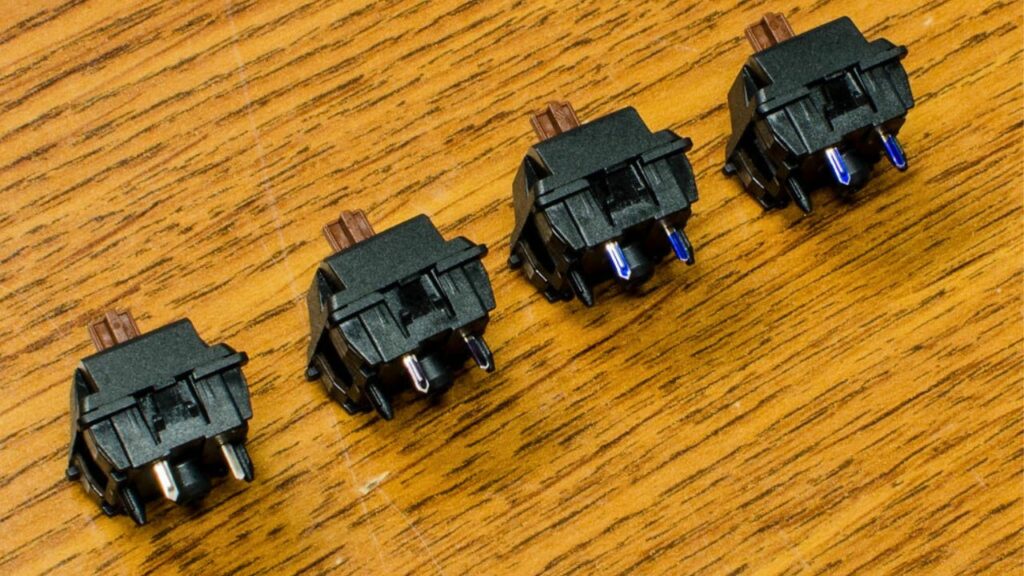
While mechanical keyboards are often equated with the distinctive, click-clack sound of keystrokes, a segment of this vast universe begs to differ. For users who seek a quieter experience, the world of tactile switches offers a variety of options that manage to strike the perfect balance between the satisfying feedback of a mechanical keyboard and a subdued sound profile. This article dives deep into the question you’ve been asking: Are tactile switches quiet?
The Mechanics of Tactile Switches
Tactile switches have the unique attribute of providing feedback upon actuation, which is the point where a keystroke is registered. This feedback is often in the form of a ‘bump,’ offering a tangible signal to the user that the keypress has been successful. This quality can enhance speed and accuracy in both gaming and typing scenarios, which is why tactile switches are so beloved among many mechanical keyboard enthusiasts.
But where does sound fit into this equation? The loud clicking sound associated with mechanical keyboards is typically a characteristic of ‘clicky’ switches, one of the three main types of keyboard switches. The other two types, ‘linear’ and ‘tactile,’ are generally quieter, with the tactile switches offering the said bump during actuation.
Tactile and Quiet: A Viable Combination?
So, can tactile switches be quiet? The answer is a definitive yes. Many tactile switches in the market are designed to offer a quieter user experience while preserving the feedback that users love. Switches like the Durock Silent Linears and ZealPC Zilent V2 are prime examples of this category. They are pre-lubed from the factory, which reduces friction, and in turn, the sound produced during actuation.
The Decibel and Beyond: Understanding Keyboard Noise

To understand why certain switches are quieter than others, we need to delve into some specifics. The sound a keyboard switch produces is linked to its decibel output — a higher decibel output equates to a louder switch. But remember, it’s not all about loudness. The pitch and tone of the sound also play into our perception of its volume. Higher-pitched sounds often stand out more and can be more bothersome to some users.
Beyond the switch itself, other factors come into play. The build material of the keyboard case, the stabilizers used, and even the manner in which the switch is mounted can all affect the overall sound output. Lighter case materials, for instance, create more noise as they dampen sound less effectively than denser materials.
The Role of Mods and Accessories
On the bright side, even if you’re not entirely pleased with the sound of your tactile switches, there exist ways to hush your keyboard. You can install O-rings on the underside of your keycaps to reduce the sound of the key hitting the board. Employing a desk mat or foam padding inside the keyboard casing can also muffle the sound of typing. Meanwhile, stabilizer mods can curb the wobble of larger keys, yielding a more stable and quieter typing experience.
Tailoring Your Experience
In conclusion, while tactile switches may not be inherently silent, many of the tactile switch options here are designed with quietness in mind, and there are numerous modifications and accessories available to further reduce noise. Thus, your typing or gaming experience can be as quiet as you want it to be, without having to sacrifice the tactile feedback that enhances your accuracy and speed. Whether you’re working late into the night, sharing your workspace, or simply prefer a more silent setup, rest assured — the world of tactile switches has you covered.
Frequently Asked Questions
- Are tactile switches good for gaming? Yes, many gamers prefer tactile switches due to the feedback they provide. The bump lets you know the keypress has been registered, which can help improve speed and accuracy. Some quiet tactile switches suitable for gaming include the ZealPC Zilent V2s and the Gateron Silent Yellows. For a more in-depth look at this topic, check out this article.
- What is the quietest tactile switch? There’s not a one-size-fits-all answer to this as the perceived noise can vary depending on other factors like the keyboard case, keycap material, and even typing style. However, some commonly recognized quiet tactile switches include Durock Silent Linears and Cherry MX Silent Blacks.
- Can I make my existing keyboard quieter? Absolutely! Modifications like installing O-rings on your keycaps, using a desk mat or foam padding, and modding your stabilizers can all contribute to a quieter keyboard experience.
- What tactile switches should I avoid if I want a quiet keyboard? If noise level is a major concern, you may want to steer clear of Kailh Box Jades, Cherry MX Blues, and Glorious Pandas as they are renowned for their volume.
- What’s the difference between a tactile switch and a linear switch? The main difference lies in the feedback they provide. Tactile switches have a ‘bump’ you can feel upon actuation, indicating that the keystroke has been registered. Linear switches, on the other hand, offer a smooth keystroke without any noticeable feedback.